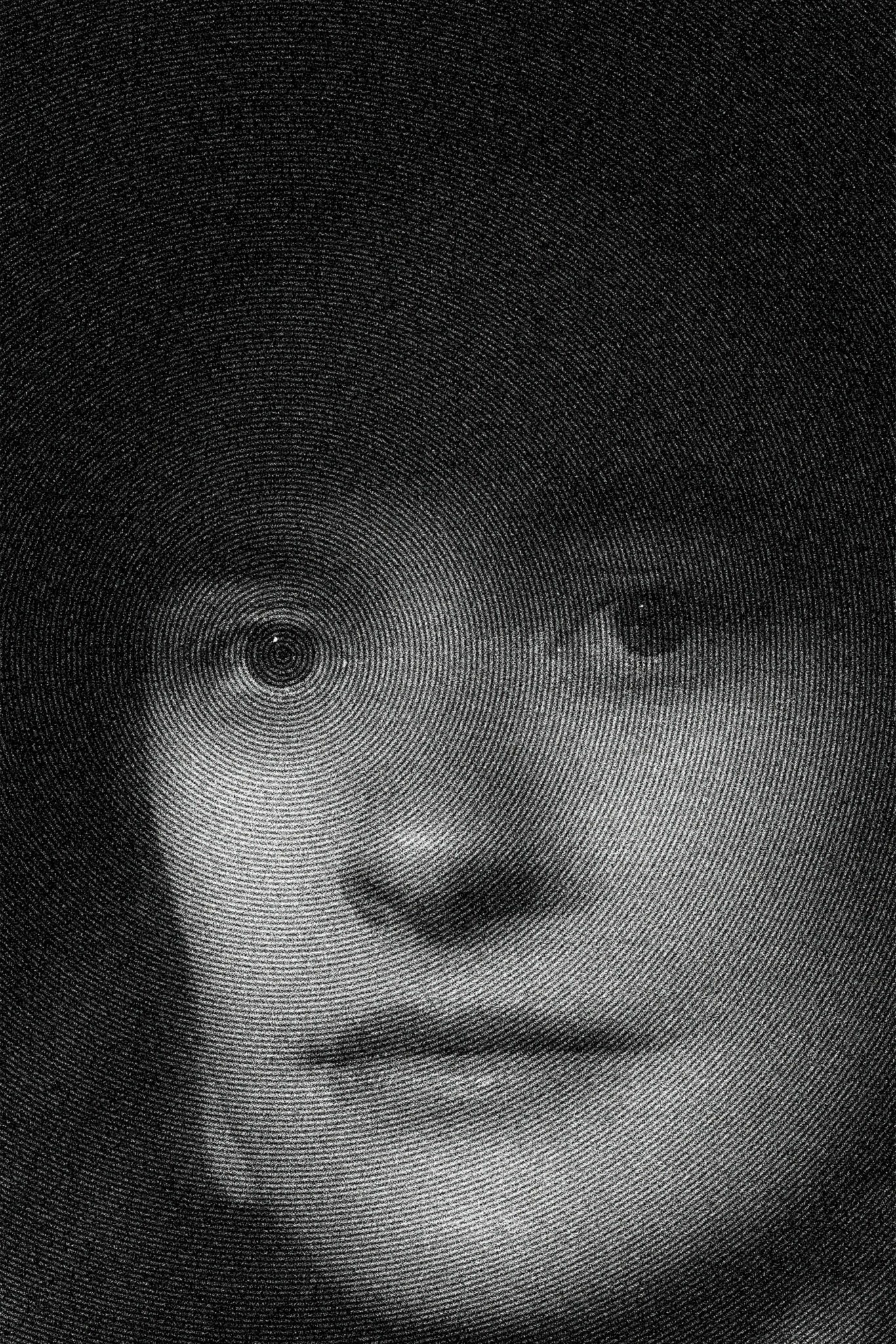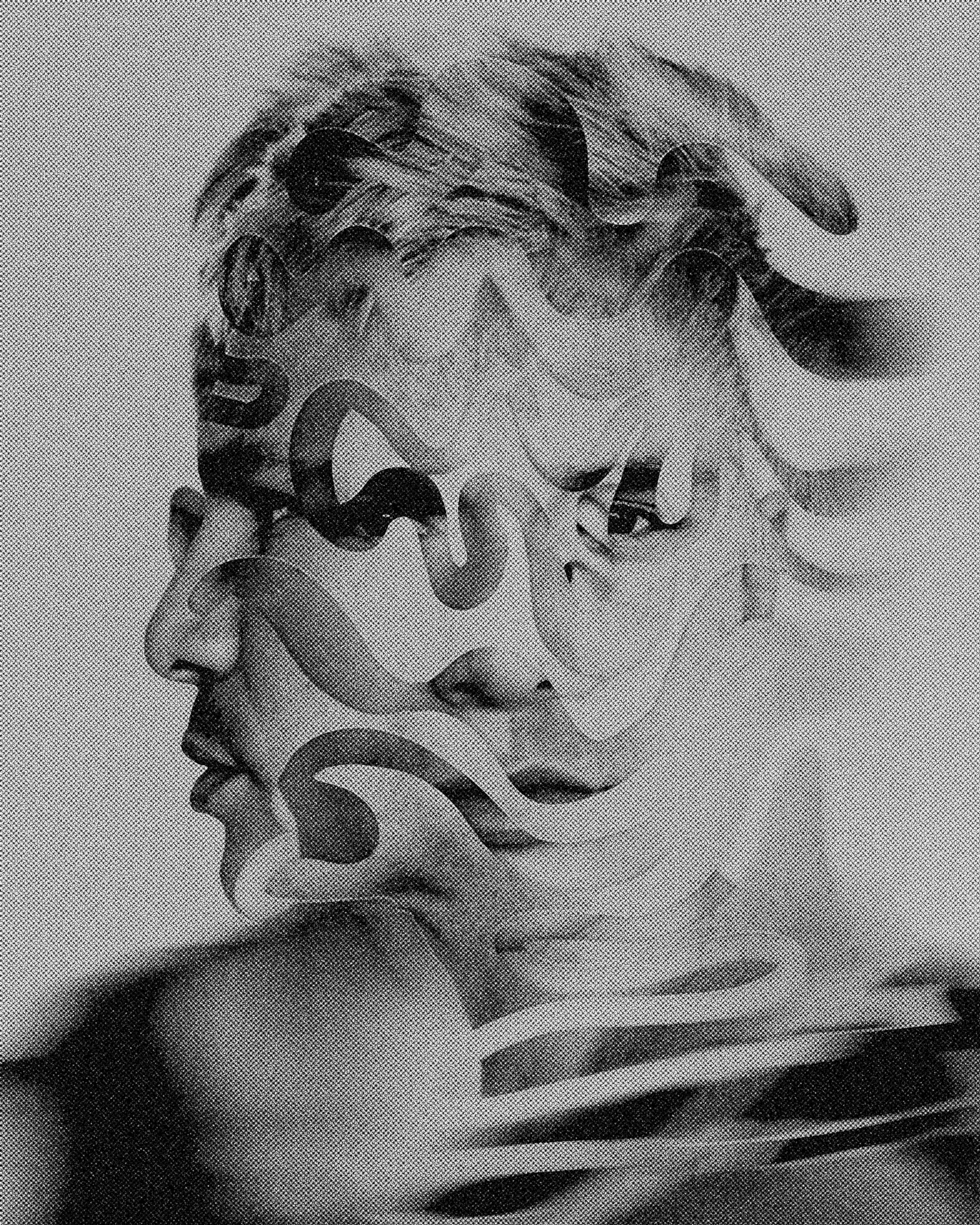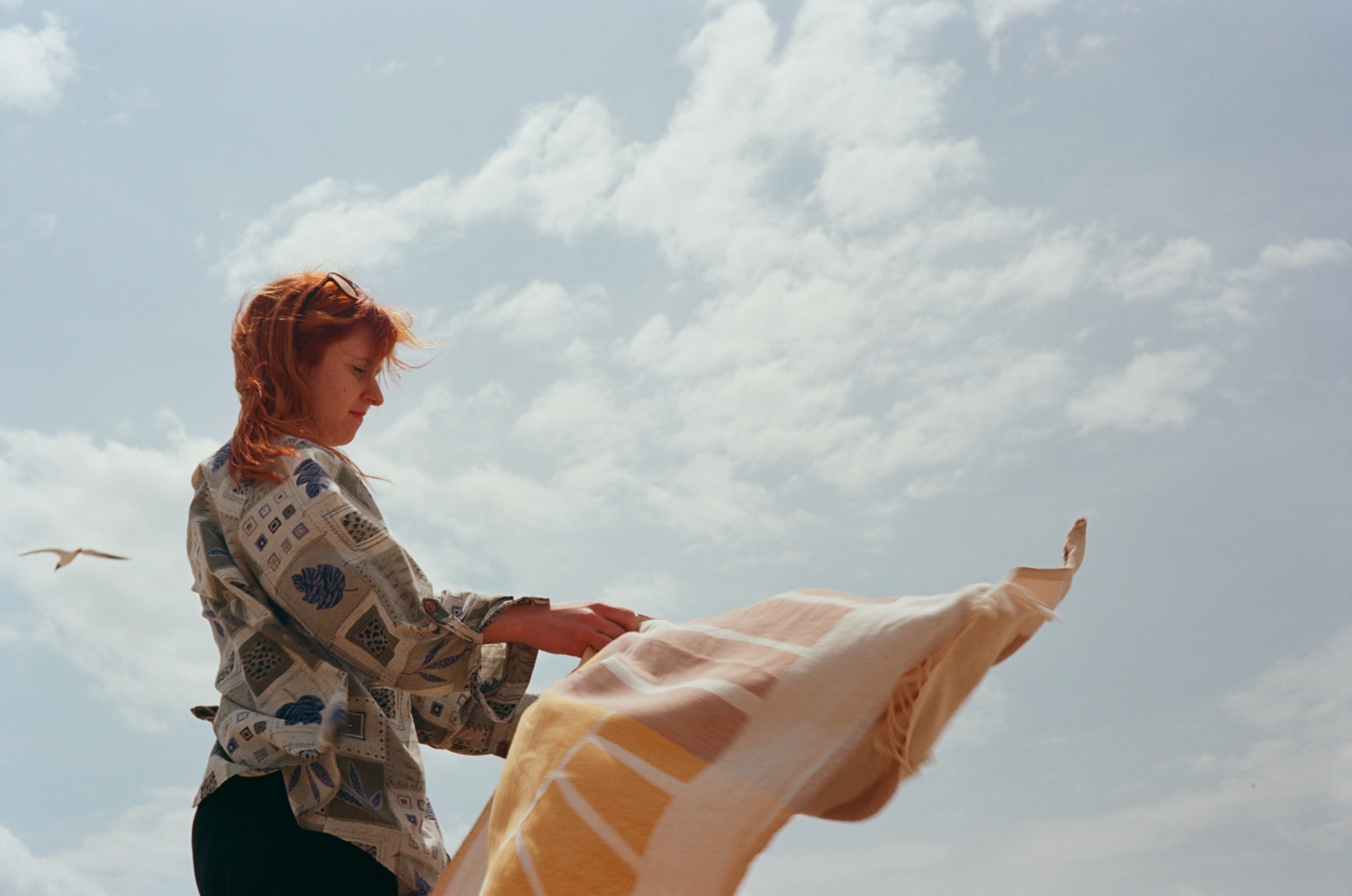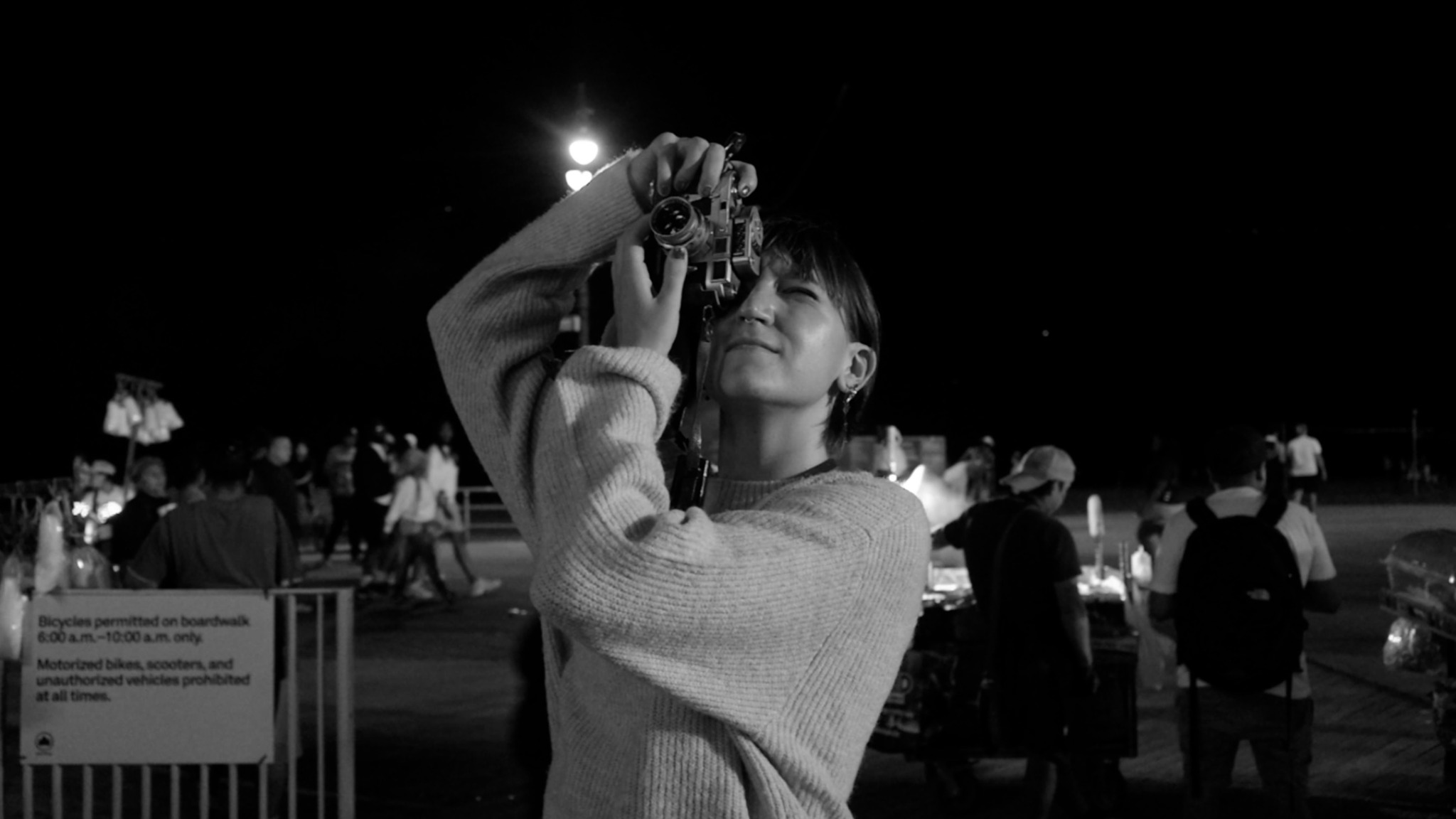We caught up with the brilliant and insightful Katharina “Jude” Mundt a few weeks ago and have shared our conversation below.
Katharina “Jude”, thanks for joining us, excited to have you contributing your stories and insights. How did you learn to do what you do? Knowing what you know now, what could you have done to speed up your learning process? What skills do you think were most essential? What obstacles stood in the way of learning more?
I learned what I do by immersing myself in every opportunity I could find, both academically and professionally. I moved to the US from Germany to pursue a career in media and started out studying Media Studies at The New School, originally with the goal of becoming a professor. But during my time there, I felt a strong pull toward camera work and experimental photography, which had always been a passion of mine that I never thought was realistic to pursue. Around the same time, I rediscovered animation and motion design, which opened up a whole new creative path for me.
These are fields that can be very male-dominated, and in the beginning, I often felt intimidated and unsure of where I fit in. But I was fortunate to be surrounded by a supportive community of artists and cinematographers, including men, women and non-binary creatives, who encouraged me and believed in my potential. That community helped me push past a lot of self-doubt and keep showing up, even when things felt uncomfortable or uncertain.
Looking back, I think I could have sped up my learning process by giving myself permission to take up space earlier and not waiting for external validation before diving into hands-on work. I also wish I had started networking more intentionally from the start. Technical skills can be learned, but building strong relationships, staying curious, and being generous with your time and knowledge are what sustain a creative career.
Some of the most essential skills for me have been adaptability, clear communication, and staying organized under pressure. Being able to read the room, understand the needs of a shoot or team, and adjust accordingly has been key.
One of the biggest obstacles has been balancing imposter syndrome with the reality that there are so many talented people in this field. It’s easy to assume that you’re being overlooked for personal reasons, when often it’s just a matter of timing or fit. I’ve learned not to take those moments personally and to keep showing up anyway. Staying open, learning from every project, and supporting the people around me has helped me stay grounded and focused on the bigger picture.

Katharina “Jude”, before we move on to more of these sorts of questions, can you take some time to bring our readers up to speed on you and what you do?
My name is Katharina Mundt, but most people know me as Jude or Jo. I started out as a UX/UI designer in Germany, and that path eventually led me to the United States where my creative focus shifted. I started working with Kino Factory and my buisiness-partner Elizaveta Tokareva; we are a creative video agency based in New York City. We provide a full range of services including video production, motion design, sound, and photography for clients ranging from businesses to music artists across the country.
My work spans across disciplines, but everything is grounded in visual storytelling. I’ve worked as a cinematographer on short films that have screened at major international festivals like the Tokyo International Short Film Festival and the Big Apple Film Festival. My animation work was nominated for a National Board of Review award in short film animation, which was a real honor and a big turning point for me professionally.
Outside of commercial work, I have a deep interest in experimental photography. I explore analog techniques like traditional collage, photographic printing, and scanning to create surreal and textured images. I carry my dad’s old Leica with me nearly everywhere, and that camera has become a quiet companion in both my personal and professional life. Photography, for me, is not just a medium or a job. It’s part of how I see and move through the world.
What I’m most proud of is finding my own voice as an artist. It’s easy to get lost in trends or chase the work that’s expected of you, but developing a personal style takes time, introspection, and confidence. I’ve worked hard to create work that feels like an extension of who I am rather than just a product.
If there’s one thing I’d want people to know about my work, it’s that it comes from a place of curiosity and care. Whether I’m shooting a branded campaign or scanning a hand-cut collage at midnight, I try to create with intention. I value collaboration, good storytelling, and making work that feels real, a little unexpected, and visually thoughtful.

Is there a particular goal or mission driving your creative journey?
Yes, there is. At the core of my creative journey is a desire to make space for stories, ideas, and perspectives that often go unheard or unseen. Whether I’m behind the camera, animating, or experimenting with analog photography, I’m always looking for ways to express something honest and emotionally grounded.
A big part of that mission is also building community. I’ve been lucky to be surrounded by artists who encouraged me to take creative risks and believe in my work, and I try to pay that forward. I want to contribute to a creative culture that values experimentation, collaboration, and empathy over competition.

How can we best help foster a strong, supportive environment for artists and creatives?
One of the biggest threats to artists right now is generative AI. It’s marketed as a tool for creativity, but in reality, it undermines the very core of what makes art meaningful. Art is rooted in human experience: emotion, memory, curiosity, things AI cannot replicate because it doesn’t live a life. Instead, it scrapes from our work, mimics it without context, and presents it as original. That’s not innovation, it’s extraction.
Generative AI also has serious environmental costs that are often ignored. The energy it takes to train and run these models contributes to the climate crisis, which already threatens so many vulnerable communities.
We need to push for policies and cultural shifts that protect creative integrity. That includes regulating how AI is trained, creating legal protections for artists’ work, and most importantly, continuing to uplift human-made art.
Contact Info:
- Website: https://www.judemundt.com
- Instagram: @jomiejeo
- Other: https://www.kinofactory.tv




Image Credits
Credit for Personal Photo: Kenneth Sousie


